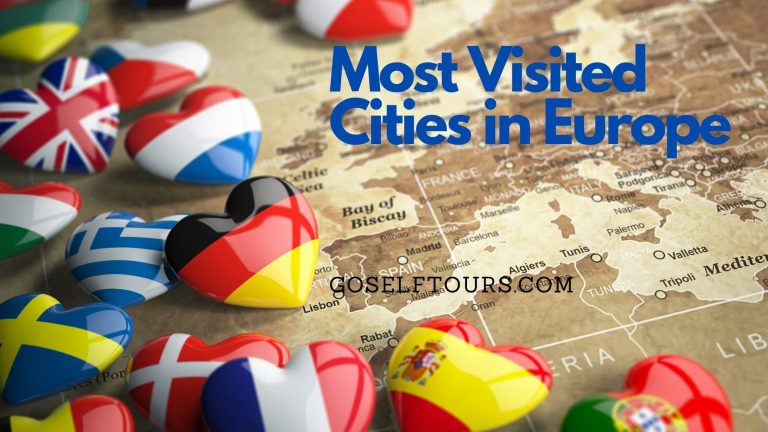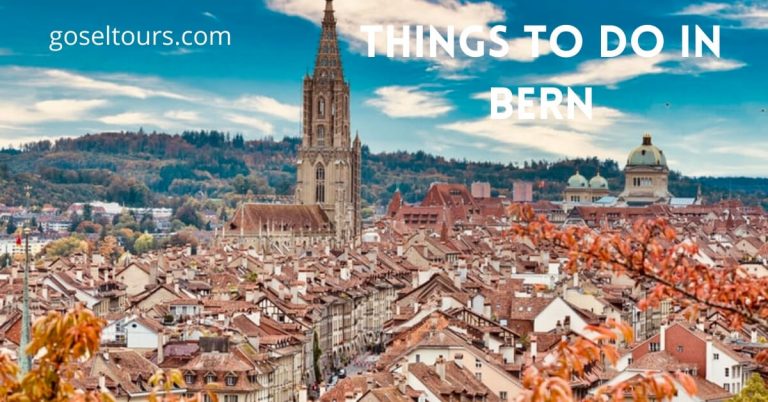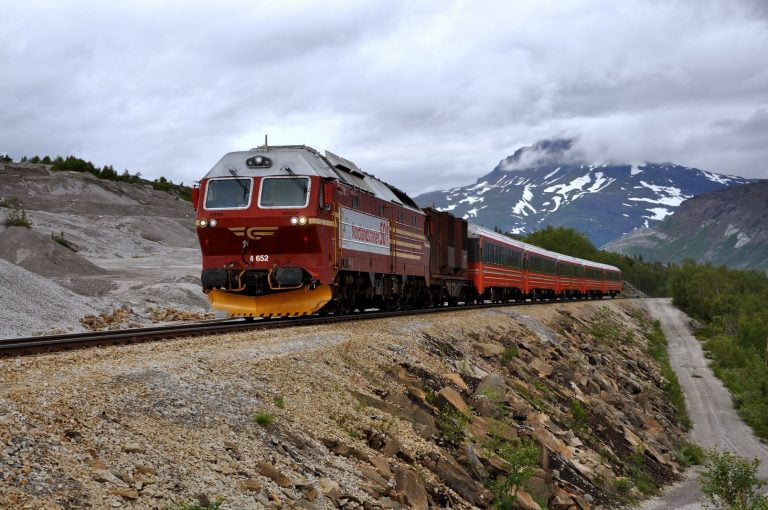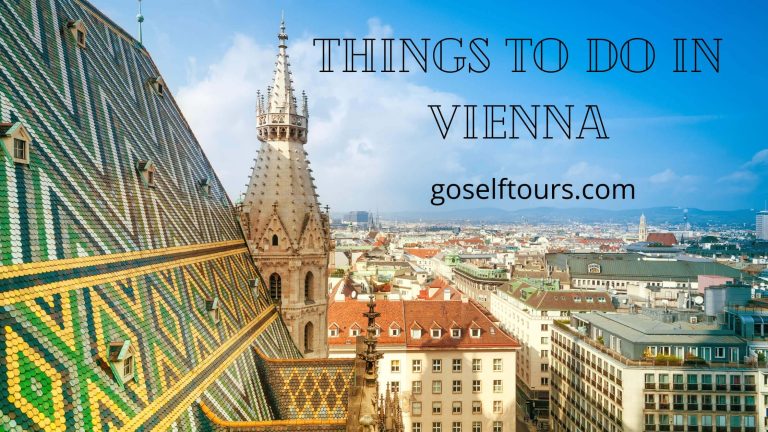10 Best Things to Do in Moscow, Russia
A city that fascinates at any time of the year: with the cold winter that makes the colors of the cathedrals on the Red Square even brighter; and with the mild summer heat that allows pleasant walks in the city’s wonderful parks or along the Moscova River. Besides being the capital city, Moscow is also one of Russia’s most important cultural centers, home to great academics such as Puskin, Dostoevsky, and Anton Chekhov.
Birthplace of musicians, film directors such as the master of editing Sergei Eisenstein. It is famous for ballets and art collections, a heritage collected quickly since its origins date back to 1147. Contended between princes and emperors, invaded by Napoleon, Moscow was chosen by the Orthodox Church as the most important religious center, so much so that the Orthodox monk Philophej called it “The Third Rome.” Moscow’s past is still very present, in the Kremlin Museum, in the splendid cathedrals, in the Armoury, and the central Red Square. Art can be seen in every city, even in the Metro, with stations that look like prestigious halls of noble palaces. In addition to beauty, they have the double advantage of being warm and easily connecting places of interest, avoiding Moscow traffic stress. If the period chosen is winter and vodka is not enough to warm up, the Sanduny Baths are worth a visit, an excuse to relax between saunas and massages. Our list does not want to be complete because there are many things to see in Moscow. On this page, we recommend the 10 things to do and see in Moscow.
1. Red Square and Lenin’s Mausoleum
Red Square, the heart of Moscow from which all the main streets of the city depart. Don’t be impressed if you feel like you can’t see the end of it; it is one of the largest squares in the world.
Although its name evokes the Communist period with the red flag, it has nothing to do with either Communism or the predominant color of the square. The Russian word красная (Krasnaya, feminine of красный, Krasny) has a double meaning, besides “red” it can also be translated as “beautiful” and originally, this was the adjective that was associated with the square where unique and spectacular monuments overlook. Walking along the Red Square, you arrive near St. Basil’s Cathedral, which immediately catches the eye with its original colored domes. On the right side, the huge white building is the GUM, the shopping paradise, with luxury boutiques of great Western brands in an architectural context that incorporates bridges and stairs and is worth visiting. Next to GUM is the colorful Kazan Cathedral, while the red building on the side is the State Museum of Russian History. To the Museum’s right are the walls that flank the Kremlin necropolis, where the bodies of the leaders of the Communist Party of the Soviet Union, including Stalin, who initially shared the Mausoleum with Lenin, were buried. The very red pyramid, which has kept the embalmed body of the Russian statesman Vladimir Lenin since 1924, can be visited free of charge, as you can tell from the length of the row!
2. The Pushkin State Museum of Fine Arts
Near the Kremlin, there is what at first glance would seem to be a Greek temple transplanted to Moscow, and in fact, the architect Roman Ivanovich Klein was inspired by the Ionic colonnade in the design of the Pushkin Museum of Fine Arts.
Inaugurated in 1912, the museum houses, in the two buildings, a vast collection of works of art from Ancient Egypt and ancient Greece, 700,000 works of European and American art from different periods as well as one of the most famous collections of French impressionist and post-impressionist painters of the 19th and 20th centuries. In short, it is a must-see Moscow place. The advice is to choose first what to prioritize and not go straight to the “Priam’s Treasure,” thinking to find the whole collection unearthed by the German archaeologist Heinrich Schliemann in Turkey. The history of “The Gold of Troy,” which by the way turns out to be older than Priam, has been very troubled, and the Russians stole it during the Second World War from the Germans, so the collection is not complete and on display, there are 259 pieces (which are not few). Devote some time to the European and American Art Gallery of the 19th and 20th centuries with paintings by the major exponents of Impressionism such as Matisse, Monet, Edgar Degas, Pierre-Auguste Renoir, and Vincent Van Gogh, and don’t miss Picasso’s paintings too.
Opening hours and cost of the Museum ticket
Address: Ulitsa Volkhonka, 12
Opening hours: Tuesday to Sunday from 11:00 am to 8:00 pm (Thursday 10:00 am to 9:00 pm).
Cost of ticket: 400 rubles (about 6 euros) for the Main Building or the European and American Art Gallery of the 19th and 20th century; 600 rubles (about 8 euros) to visit both.
3. Moscow Kremlin
The Moscow Kremlin is the most famous fortified citadel in Russia and is built on the hill of Borovichij, the place of Moscow inhabited since the Bronze Age.
The realization of the project in 1156 is very different from the place we visit today and dates back to the last renovation of the 15th century and Italian architects, including Aristotele Fioravanti, who designed the walls and the perimeter towers. The Kremlin Museum of Moscow was declared a World Heritage Site by UNESCO in 1990. If you go beyond the walls, you can easily understand why, because inside there are cathedrals, museums, the beautiful gardens of Aleksandrovsky, historic buildings such as the Poteshny Palace, Stalin’s residence, and the Senate Palace, since 1991 official residence of the Russian President. Entering from Kutafya Tower, you can visit the churches in the Cathedral Square, the buildings of the Historical and Cultural Museum of the Kremlin State, and the majestic golden dome of Ivan the Great’s Bell Tower, from the top of which you can enjoy a beautiful view of the fortress and much of the city while the government buildings are not open to the public. Between the ostentation of communist power and the sacredness of the Orthodox churches, the walk could take a whole day, and you should bring a packed breakfast because there are no places to eat.
Opening hours and cost of the Kremlin Museum ticket
Opening hours:
Cathedrals’ Square, which allows you to visit the cathedrals and museums inside them (open every day except Thursdays): from 1st October to 14th May: from 10 a.m. to 5 p.m.; from 15th May to 30th September: from 9.30 a.m. to 6 p.m;
Ivan the Great bell tower and its museum (open every day except Thursday) at the following times: 10:15, 11:15, 13:00, 14:00, 15:00, and 16:00 with an additional session at 17:00 from 15 May to 30 September. The visit is, however, subject to weather conditions;
Ticket price: Cathedral Square: 700 rubles (about 10 euros); Ivan Il Terribile’s bell tower and museum: 350 rubles (about 5 euros).
4. Armory Chamber
The Kremlin’s fortifications also house its treasure, some of which is on display in the Armoury Museum, a must-see visit to Moscow. The imposing white building that can be seen on entering from the Borovitskaya Tower is the Armoury Museum.
Contrary to what the name suggests, it is not only the weapons and be exhibited, but also a vast collection of gold and silver jewelry made by Russian craftsmen, the clothes worn during institutional ceremonies but also ecclesiastical vestments and royal gifts from all over the world such as the famous Crown of Monomakh, which combines gold and precious stones with sable fur. The greatest ostentation of Muscovite power is undoubtedly the golden carriages and, in particular, the parade carriage offered by King James I Stuart to Tsar Boris Godunov. The Armoury Museum gives access, with an additional ticket, to the rooms of the Diamond Fund, and it’s worth queuing because the carats of diamonds present are rarely seen all in one place: don’t miss the Star of Yakutia, a gem boasting 232.1 carats and the diamond-studded eggs of Peter Carl Fabergé.
Opening hours and cost of the museum ticket
Opening hours:
Monday to Sunday (closing day Thursday) at the following times: 10:00, 12:00, 14:30, 16:30.
Cost of ticket: 1000 rubles (about 14 euros).
5. Saint Basil’s Cathedral
Enchanting, with its unusual colors and shapes, St Basil’s Cathedral has hypnotic power, and it is not surprising that in 1990 UNESCO declared it a World Heritage Site.
Icon of Moscow’s city was commissioned to Postnik Yakovlev by Ivan The Terrible to celebrate the victory over the Khanate of Kazan, which took place on the day of the Intercession of the Virgin. That is why its original name was the Cathedral of the Intercession of the Mother of God on the Moat, given its location in Red Square, on the Kremlin side. You should not stop to admire the outside of the cathedral with the fear of being disappointed in the inside because, in reality, the labyrinth between the chapels, placed on different floors, is just as particular and suggestive. Each chapel is of a different color, painted with the painting technique of the pod Kirping (fake brick), and it may happen to witness a charming choir that makes the visit unique. Admiring it seems absurd to think that it has survived almost by chance because many have tried to destroy it. It started from the Soviet regime because it hindered the military parade held in Red Square and the French troops claiming their power. Fortunately, for lack of time, they desisted!
Opening hours and ticket cost
Opening hours:
8 November – 30 April: 11: 00-17: 00, every day; 1 May – 31 May: 11: 00-18: 00, every day; Closed on the first Wednesday of the month;
June 1 – August 31: 10: 00-18: 00, daily; June 6 and August 8 closed for cleaning;
September 1 – November 7: 11:00 a.m. to 6:00 p.m., daily;
Cost of ticket: 700 rubles (about 10 euros).
6. Bolshoi Theatre
In Moscow, the Bolshoi Theatre already attracts from its external facade, in neoclassical style, with many references to Greek mythology such as the sculpture by Petr Klodt depicting “Apollo in the chariot of the sun” and below two angels holding Apollo’s lyre.
Initially, it was born as the private theatre of Prince Pyotr Ursov, but what we are visiting today has little in common with the original project. The first building was completely burned down in 1805 and, after the first reconstruction by Joseph Bovè, there have been many other renovations. The last renovation work required the construction of another stage, called Palco Nuovo. World-famous dancers were trained in the theatre and although it is interesting to visit, admiring it as a spectator of ballet has another charm, perhaps on the main historical stage, which is that of 1856. Even if you are not a connoisseur, it is worth it because watching the musical interpretation of experienced dancers in a historical place is exciting. Today is home to the Bolshoi Ballet company, which, as its name suggests (Bolshoi means big in Russian), is the largest and most important ballet company globally, with about 200 dancers.
Opening hours and cost of the Bolshoi ticket
Opening hours:
Tuesday, Wednesday, and Friday for guided tours that last one hour and start at 11:30 am in English; otherwise, you can buy a ticket to the opera or ballet on the website;
Ticket cost: 2000 rubles (about 27 euros) for the guided tour.
7. Novodevichy Convent and Cemetery
Why visit a cemetery on holiday? It might be more than a legitimate question. Still, the Novodevichy Cemetery, and its World Heritage-listed convent, is a monumental celebration to famous people who have distinguished themselves in Russia and the world more than a place of commemoration for the loss of loved ones.
You will walk among the tombs of writers such as Bulgakov and Chekhov, directors who made film histories such as Sergei Eisenstein and Konstantin Stanislavsky, musicians, scientists, and the last exponent of communism in Russia, Boris Yeltsin. In perfect Moscow Baroque style, the Monastery overlooks the Moskva River and is one of the few convents in Moscow that has not undergone major reconstructions. From the Church of the Savior Transfiguration, you can access the monastery, which is not the only place to visit. Inside the walls, there are cathedrals with high golden domes, gardens, the Lopukhina Palace, and the Baroque bell tower of the Assumption Church. Before leaving, don’t forget to take a look into the waters of the lake, beautiful even with night lighting.
Opening hours and ticket cost
Address: Luzhnetskiy Proyezd, 2
Opening hours: every day from 9:00 to 17:00;
Cost of ticket: 300 rubles (about 4 dollars)
8. Tretyakov Gallery
The largest collection of Russian art in the world is contained in this beautifully colored picture gallery, founded by Pavel Tret’jakov, who dedicated his entire life to painting and art, first buying artworks all over the world, then as a financier of Russian artists, and finally as the custodian of a treasure trove of over 1300 works from the 11th to the beginning of the 20th century. You don’t need to be an expert to appreciate landscape paintings, portraits of famous people such as Tolstoy and Dostoevsky, Russian impressionists and realists, and medieval icons and mosaics, which cannot be missed for their colors and attention to detail. Take time to admire the “Virgin of Vladimir,” the most venerated icon of Russia, and the “Trinity” of Andrei Rublev.
Address: Lavrushinsky Ln, 10,
Opening hours: Tuesday, Wednesday, Saturday from 10:00 a.m. to 6:00 p.m.; Wednesday, Friday, Sunday from 10:00 a.m. to 9:00 p.m.
Cost of ticket: 500 rubles (about 7 euro)
9. Tsaritsyno Palace and Park
When, towards the end of the 18th century, Empress Catherine II decided that this park was to be her country residence, she gave precise orders to the architects: the forest was authentic and not the result of human intervention. This is precisely the feeling you get when you enter Tsaritsyno Park and walk along its romantic paths, interspersed with bridges and lakes.
Although easily reachable by metro, it’s a bit off the tourist circuit, which makes this place ideal for a few hours of pure relaxation accompanied by a hot drink at the cloister. In addition to the greenery and the particular fountain, the park includes an 18th-century architectural complex recently renovated (in 2007), including the Palazzo Grande, the Piccolo Palazzo, three courtiers’ lodgings, a greenhouse, and the Opera House. Among the rooms of the residence, which houses a museum with paintings, ceramics, and archaeological finds, one wonders if, in the end, it would have met the tastes of Catherine II, who died suddenly in the middle of the project!
Address: Dol’skaya Ulitsa, 1
Opening hours:
Daylight saving time: Tuesday to Friday from 10:00 to 17:30; Saturday from 10:00 to 19:30; Sunday from 10:00 to 18:30;
Winter Hours: Tuesday to Friday from 11:00 a.m. to 5:30 p.m.; Saturday from 11:00 a.m. to 7:30 p.m.; Sunday from 11:00 a.m. to 6:30 p.m;
Closed on Mondays.
Cost of ticket: 800 rubles (about 10 euros) for the entire architectural complex. Access to the park is free.
10. Moscow Foods
Moscow is a city characterized by winter temperatures that often reach -25°, and in summer, the climate is warm but not torrid. So, if we talk about food, the specialties can only be hot as soups and soups, including the fish Ucha, pelmeni, or tortellini in broth stuffed with meat or vegetables.
All dishes are accompanied by sour cream, which in Moscow is used as much as ketchup in America. Vodka is a drastic remedy against the cold, but it doesn’t seem to weigh on Muscovites. For a typical aperitif, try blini, very similar to salty pancakes, often accompanied by smoked salmon, caviar, and sour cream. Before leaving thinking about Russian food, the association with the homonymous salad is immediate. Still, once you arrive in Moscow, you will discover that there it is called Oliver salad by the famous chef who created it (Lucien Olivier). Typical dishes, indicated especially for the winter period, are the golubtsy, cabbage rolls with various seasonings, and pirozhki-filled sourdough dumplings. If you love meat, don’t leave without trying beef stroganoff, fillet cut into strips, and cooked in cream with onions and mushrooms.



